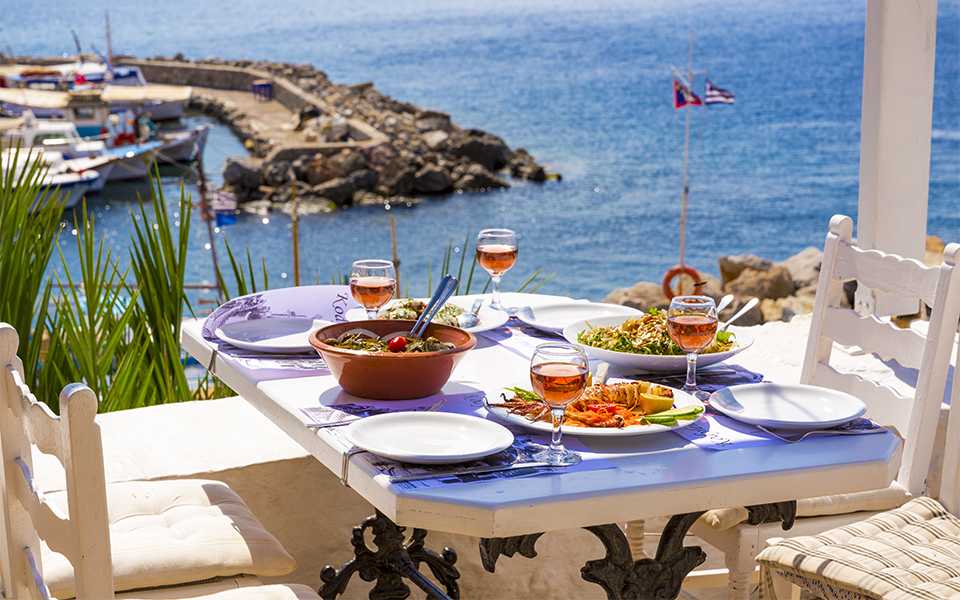The Restaurant
“Restaurant” (estiatorio) means something specific in Greek. This will be a place that may have some food cooked to order (chops, steaks), but also some prepared, slow-cooked dishes. Often restaurants will be known for specialties, for example a stifado (rooster or hare cooked with pearl onions, wine, and tomato and sweetened with spices), or even a particularly good moussaka. They range from casual to quite elegant.

© Shutterstock
The Taverna
Tavernas are usually more casual places that serve dishes cooked on the spot – grilled meats, fried seafood – simple dishes of the moment. The dining experience is communal – you might order your own main dish but you’ll definitely share it, and the salads and sides are in the center of the table for everyone.
Tavernas often specialize in one type of food. The psarotaverna (“psari” = fish) specializes in fish and seafood. Other tavernas may offer mainly meats. But a special, less common, subcategory – the hasapotaverna (the “butcher’s” taverna- “hasapi’ = butcher) truly specializes in meat. Butchered on the premises, the meats are generally of excellent quality, served in tremendous portions at a fine price.
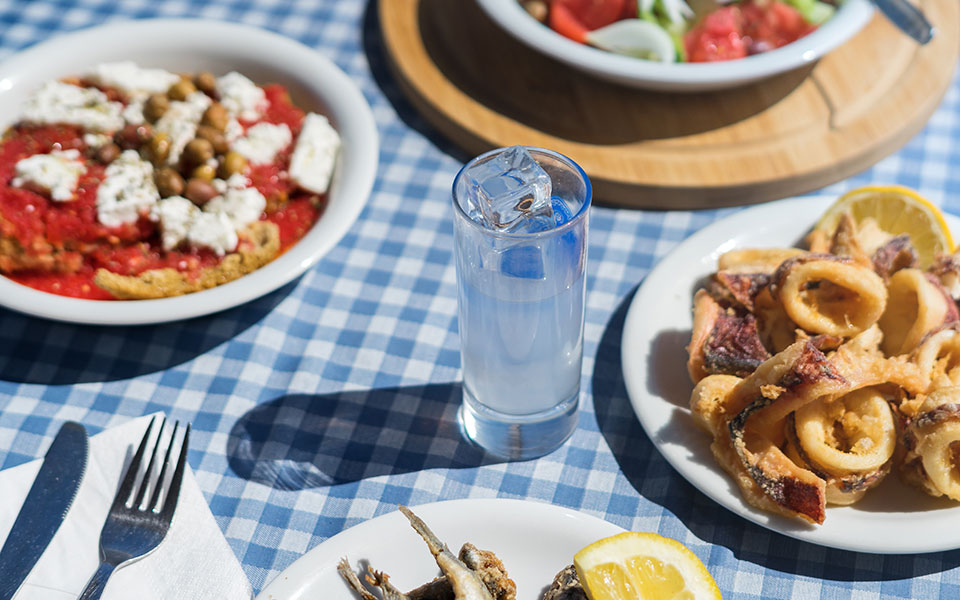
© Shutterstock
The Ouzerie
As the name says, this is place to enjoy ouzo, with the dishes that it enhances. The dishes are called meze, and are usually smaller and sometimes intensely flavorful, to stand up to the drink’s strong personality.Eating at an ouzerie is mainly a communal affair, with all the small dishes placed in the middle of the table for sharing. The refreshing sweet anise aroma of ouzo makes it a good pairing with seafood, and particularly salty seafood like cured, smoked, and salted fish.
Over the course of a pleasant evening, the dishes make a satisfying meal. Of course, if you are not an ouzo fan but still want to enjoy the ritual, beers, wines, and soft drinks are always available.
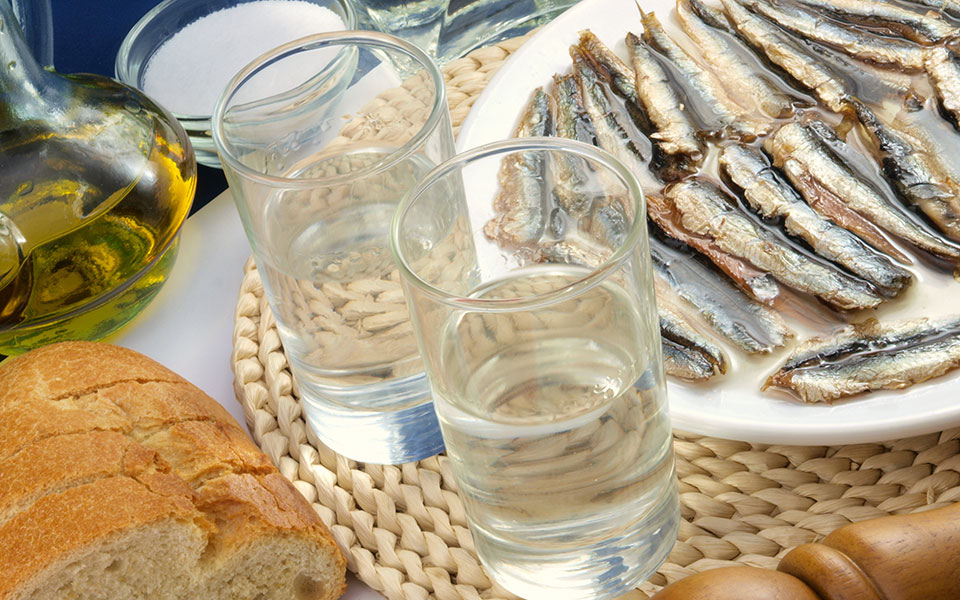
© Shutterstock
The Tsipouradiko
Much like the ouzerie in concept, but the featured drink is tsipouro – distilled from grape marc and either unflavored or scented with herbs. They are particularly common in mainland and northern Greek cities. In Crete you’ll find its cousin the ‘rakadiko‘ where local raki takes the place of tsipouro (the two drinks being closely related, if not identical).
These strong spirits go well seafood but also with strongly flavored meat dishes and spicy things, like bougiourdi – feta broiled with tomato and hot peppers.
Tsipouro is made with or without anise, and drunk diluted or at full strength. It’s a powerful drink, and you’ll want to pace yourself and spread it out over several dishes.
The Voliotiko Tsipouradiko
Pacing is the specialty at this excellent sub-genre. The Tsipouradika in the mainland coastal city of Volos offer a unique, fully curated experience, aimed at balancing food and drink in an ideal ratio that extends the pleasures of each.
The tsipouro comes in individual single – serving bottles. With each bottle comes a different, pre-established, dish, to form an ideal progression that unfolds over the course of the evening. How long an evening? A local expert – Grigoris Fanoulas of “Live Like Local” answers without hesitation: “Five bottles spread out over three hours for locals. For people new to the experience, we recommend three bottles over two hours.”

© Dionysis Kouris
The Mageirio
The mageirio is a neighborhood institution, serving home-style dishes in a casual atmosphere, usually also available for take-out. This is an inexpensive option, because the dining style by nature and custom does not involve ordering a bunch of dishes like you might at a taverna or ouzerie.
It’s fine to order just a portion of food and something to drink. It is also a place you will find people dining alone. Mageiria specialize in things like ladera – vegetables cooked until meltingly soft in oil and tomato, moussaka, and chicken and potatoes on the oven. In most places the cooked food is on display and you can pick what strikes your fancy at the counter. Many are also strictly lunchtime affairs, closing by around 17.00 – 16.00.
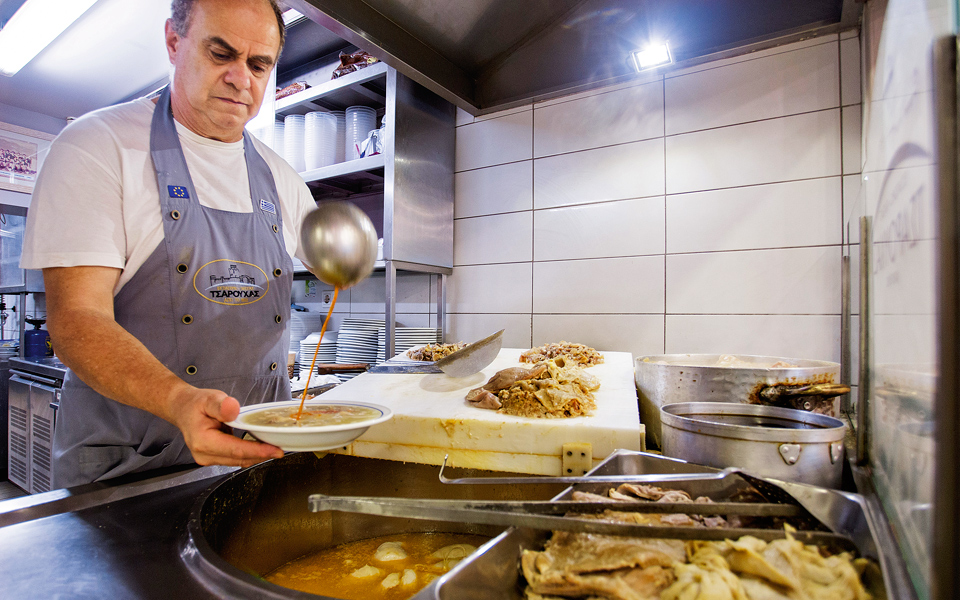
© Sakis Gioumpasis
The Patsazidiko
A genre that is almost its own sub-culture, patsazidika specialize in “patsas”- a soup of tripe, belly, and hoof of calf that is prized for its nutritional properties. It is rich in collagen – good for the joints and the skin. Collagen is also said to line the stomach, protecting it from the effects of alcohol, which is why patsazidika are also often open all night. Patsas is an acquired taste, but most patsazidika also serve other excellent soups, a comforting close to a great night out.
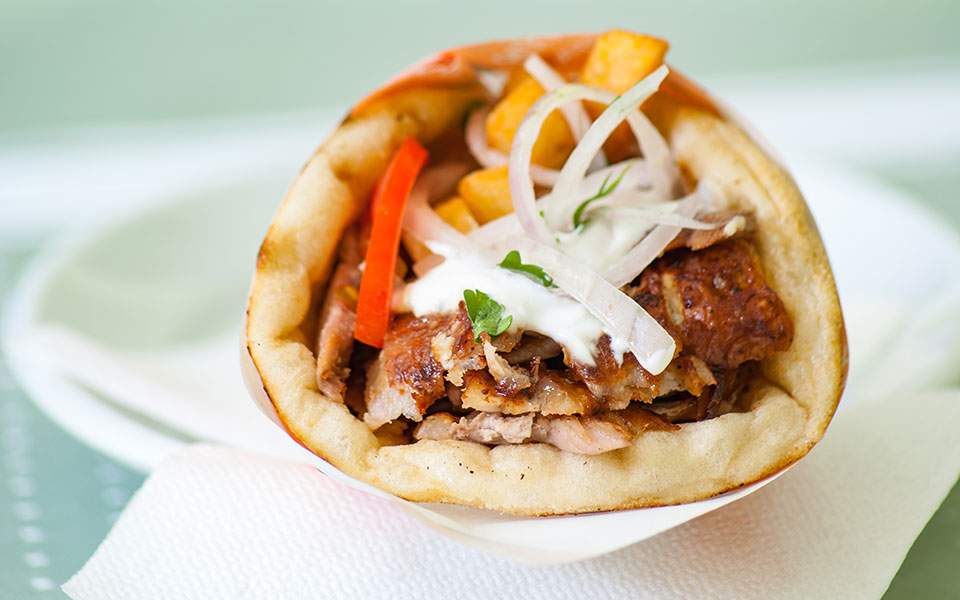
© Shutterstock
The Gyradiko
Specializing in Greece’s favorite street food – pita gyros (at least in Thessaloniki – our Athenian friends call this a “souvlaki”), gyradika (gyro = to turn), feature meats cooked on the spit. The featured item is gyros itself – seasoned slices of pork (or chicken) in layers, roasted on a vertical spit until juicy and crisp, then shaved off and served generally stuffed in a pita bread with salad. Giradika usually have grilled meats too – a pancetta or some spicy meat patties (known as kebap).

